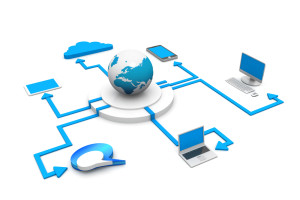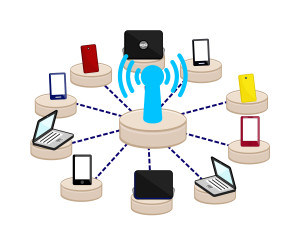 Almost everyone has spent time on hold when trying to contact a customer service line for support. For American consumers, Time magazine reports, this means 10-20 minutes per week spent on hold, or up to roughly 13 hours a year. This hold time frustrates customers and can affect the business they’re trying to contact as it creates a negative customer experience.
Almost everyone has spent time on hold when trying to contact a customer service line for support. For American consumers, Time magazine reports, this means 10-20 minutes per week spent on hold, or up to roughly 13 hours a year. This hold time frustrates customers and can affect the business they’re trying to contact as it creates a negative customer experience.
Fortunately, technology has improved to the point where businesses have alternatives to the traditional phone system, such as Voice over IP (VoIP) and unified communications (UC). VoIP and UC allow extended support, new ways to resolve problems, and integrated solutions.
Streamlining
The biggest benefit of UC is that it enables single solutions no matter what communication channels are used, from instant messaging to live chat to the traditional phone system. VoIP and UC streamline communications so well that research firm Infonetics predicts that by 2018, their market will reach $88 billion.
Benefits of UC and VoIP
Using UC and VoIP systems creates a seamless experience for the customer. Previously, a customer who was handed off from live chat to the phone system would need to rehash information to the representative on the phone. With UC, this information is given once at the start of the communication and is then available to all agents regardless of channel.
VoIP provides the ability to use interactive voice response systems to record the customer’s name, phone number, and other identity information as well as a summary of the customer’s issue. This means less stress for the customer and improved resolution time because the agent can focus on the problem at hand instead of taking time to record information the customer has already provided.
Reducing Pressure
More communication channels means more ways for the business to help the customer. Issues that are easy to solve can be handled using convenient support channels such as social media and live chat, leaving phone support to be used for issues that require greater explanation and a more focused response. UC and VoIP can also ensure that specific issues get routed directly to the people most qualified to solve them instead of the first representative to pick up the phone.
Combining Support Measures
Computers are used for almost everything, and many representatives are able to solve a problem in a smaller time frame through screen sharing. In the past, this meant use of a separate application; now, UC usually has screen sharing built in. This allows the representative to quickly access the customer’s computer in order to see error messages, check settings, and demonstrate procedures.
Video Conferencing
As with screen sharing, video conferencing allows both sides to have a visual component to their support. One of the benefits of video conferencing is that it allows multiple people to get support at once, rather than each person having to call in and speak to a different representative. Representatives can see exactly what the customers did before the problem occurred. Speaking to a real person also helps improve the customer experience.
The use of UC and VoIP improves the support experience on both ends, leading to more efficient employees and loyal customers. By streamlining support channels, combining support measures, and connecting the customer with the most qualified representative, UC and VoIP reduce customer stress and enhance a business’s relationship with its clients.


 The deployment of mobile technology is swiftly becoming a crucial aspect for business success. The global marketplace demands organizational flexibility through mobile solutions, and indeed, employees now have access to business systems on a wide variety of personal devices. And, because of that mobility, video conferencing has emerged as an important factor in sustaining unified communication and business collaboration.
The deployment of mobile technology is swiftly becoming a crucial aspect for business success. The global marketplace demands organizational flexibility through mobile solutions, and indeed, employees now have access to business systems on a wide variety of personal devices. And, because of that mobility, video conferencing has emerged as an important factor in sustaining unified communication and business collaboration. Cyber crimes have recently been carried out in shocking sophistication, sending waves of alarm bells to big enterprises. An enterprise’s communications system is the first vector of attack that criminals can target. Securing B2B unified communications (UC) with a cloud-based UC-as-a-Service (UCaaS) solution is a logical option.
Cyber crimes have recently been carried out in shocking sophistication, sending waves of alarm bells to big enterprises. An enterprise’s communications system is the first vector of attack that criminals can target. Securing B2B unified communications (UC) with a cloud-based UC-as-a-Service (UCaaS) solution is a logical option.